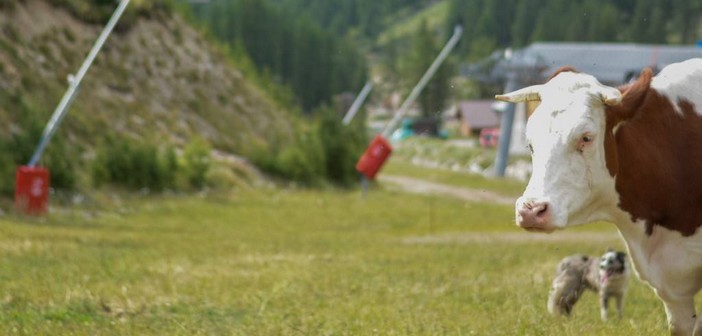The name Isola comes from the Latin root ‘Lev’ meaning grassy slope. In 1066, the Bishop of Nice gave Leudola to Count Rostaing. The name evolved and changed over the centuries: Lieusola, Lieussoulot in mountain dialect, l’Isola, and finally Isola, as we know it today. In the past, the area was a passageway for herds and the Chastillon cowshed still welcomes them in the summer.
.
The main facilities were located around the chapel, including a stable, a cheese dairy, and shepherds’ accommodations. Isola village was then an important town, with a population of 1200 in 1840. With the annexation of the County of Nice to France in 1860, Isola lost its Chastillon pastures. The entire ridge line remained under the States of Savoy and then to Italy after the completion of unification in 1861.
The explanation was to satisfy the King of Piedmont-Sardinia by preserving his hunting grounds. The terrain’s configuration reveals the real reason, that of military strategy. Chastillon, the mule path of Lombarde, and another towards the Red Lands, Mollières, and upper Vésubie ended up on the other side of the border.
France and Italy had rather tense relations. The fortresses erected in 1935 by Mussolini are witnesses to the discord between the Stura and Tinée valleys. After the war in 1947, the people of Isola regained their pastures thanks to the new border.
At the end of the 1960s and the beginning of the 1970s, a road was opened on what was previously only a mule path. This road, during the beautiful season, allows communication with Piedmont, with the sanctuary of Sainte Anne de Vinadio just eight kilometers from the Lombarde pass. One can continue to Cuneo and Piedmont.
This road climbs to an altitude of 2350 meters and inspired the idea of creating a winter sports resort where snow would be guaranteed. Isola 2000 was born. Some friends asked us about the explanation of Isola’s coat of arms. To answer their question, we take the opportunity to look back to the repurchase of the village’s enfiefment in 1702.
Isola became a free commune, hence the motto: Libertas et Fidelitas, signifying its freedom and nonetheless its loyalty to its lord. The keys of Saint Peter as Isola is placed under his protection. The two other attributes are easy to understand: the chestnuts for the chestnut trees and the silver band representing the Tinée.
From the village, look up, the Guerche descends, cooing its symphony to meet the Tinée, then a summit stands before you, calling you, and believe us, you will not regret answering its invitation.
Thierry Jan


